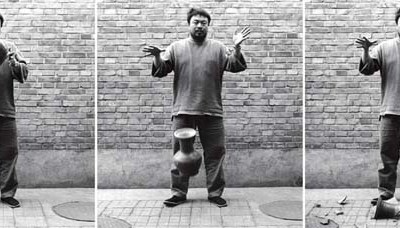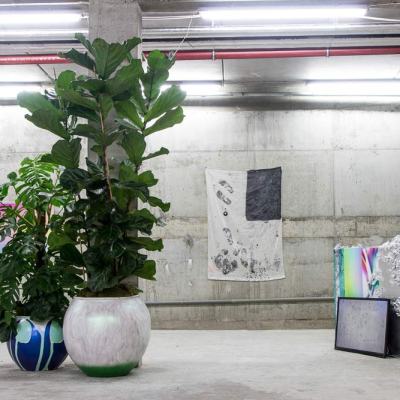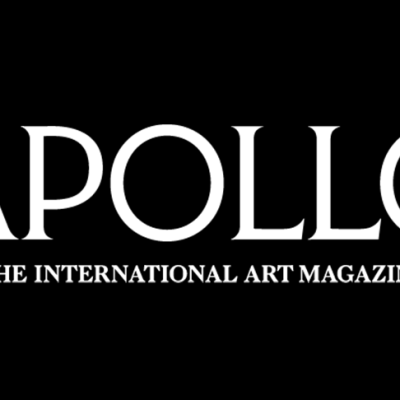The practice of ‘flipping’ contemporary art recently produced by younger artists has attracted fresh journalistic interest in the wake of the recent auction season. Flipping refers to the rapid and financially advantageous resale of an under-priced asset. Bloomberg has reported that, from 2011 to 2013, the volume of work produced less than three years before being resold on the secondary market was almost double what it was in 2007 when the art market reached its notorious zenith.
Simply put, the period between initial acquisition on the primary market from an artist’s gallery or agent and subsequent resale has shortened dramatically. After the initial appearance on the secondary market trophy works by hot young artists are frequently sold repeatedly in a short space of time.
Particular concern is growing around the rapidly inflating prices of a small number of exclusively male artists in their late 20s and early 30s. Much has already been written about the rapid ascent of Oscar Murillo’s market (b.1986). A Columbian artist recently signed by blue chip dealer David Zwirner, he is perhaps emblematic of the current debate. Murillo’s works traded for several thousand on the primary market in 2011. Yet his highest price at auction was set last September when a large abstract work, typical of the artist’s output, made $401,000 (including buyer’s premium) at Philips in New York. Apparently acquired by the owner for $7,000, this represents a profit of 5,600 per cent. Enough to make any investor’s eyes water.
Market commentators have been quick to voice alarm about the rapid rise of artists who have rarely been exhibited in public institutions; the slow, careful validation of which is historically associated with an increase in price. It likewise raises the spectre of subsequent crashes in monetary value. Anselm Reyle (b.1970) is a high profile victim of this process. His works frequently traded for more than $250,000 in 2007, and his market since appears to have bottomed out, with works publicly selling for significantly less than they were previously acquired.
A related phenomenon is the dominance of mega-galleries. Jerry Saltz has recently written about the inhibiting effect that big business can have on young careers. Saltz decries the pressure to commodify and brand still nascent careers for the top tiers of the market as particularly detrimental.
The ability of such galleries to effectively market their artists is coupled with the extreme availability of information globally. News of an artist’s financial success can spread through the microcosmic art industry overnight, leading to out-sized interest in a finite supply of work. It is important to note, however, that the majority of young (roughly 35 and under) artists making their auction debuts are still represented by mid-tier, or smaller, galleries. The big galleries tend to swoop after the fact, looking to capitalise on a rising star.
A compelling parallel can be found in the popular music industry. Global sensations which appear instantaneously as full blown brands (Justin Bieber, Lady Gaga, Psy) who struggle to maintain a long term presence, may hold lessons for the contemporary art market. The ‘viral’ nature of contemporary visual culture and the relationship with commerce is one which investors should think carefully about.
Which young artists are being ‘flipped’ at auction?
Peake completed his master’s degree at the Royal Academy Schools only last year, by which point he had already performed at the Tate Tanks. He was the subject of a solo show at White Cube (Bermondsey) the same year. His auction debut at Christie’s this month fetched £32,500: more than twice its top estimate of £15,000.
Kassay completed his Bachelor of Fine Arts at the State University of New York at Buffalo in 2005. Just five years later in 2010, one of his signature silver paintings sold at Phillips de Pury & Co for $86,500 – over 10 times its estimate, and by the following year his prices had sky-rocketed. He only had his first museum solo show in October 2011, at the ICA in London. By that point, most institutions couldn’t afford to acquire his work.
Murillo caused a stir last autumn when a single work of his, Untitled (Drawings off the wall) made $401,000 at Phillips, New York. The sale took place little more than a year after he completed MA in Painting in 2012 at the Royal College of Art, in the same month that a solo exhibition of his work opened at the South London Gallery.
Lucien Smith graduated with a Bachelor of Fine Arts from Cooper Union in 2011. Pieces that he made at art school have gone up for sale at auction already, and this month Two Sides of the Same Coin, a spattered monochrome painting, fetched $369,123, well over its estimate of $98,500.
Ito graduated from the California College of the Arts in 2010. Earlier this month, his mixed media work The Agony and the Ecstasy (2012) sold for £56,250, despite its significantly lower estimate of £15,000. It was his auction debut.
Related Articles:
Flipping Out: Saltz and Simchowitz clash over the art market (Maggie Gray)
Forum: Does today’s art market benefit young artists?
Elsewhere on the web:
Cultural Entrepreneur Stefan Simchowitz on the Merits of Flipping, and Being a ‘Great Collector’ (Artspace)
Saltz on Stefan Simchowitz, the Greatest Art-Flipper of Them All (Vulture)
Lead image: used under Creative Commons licence (CC BY 2.0)



